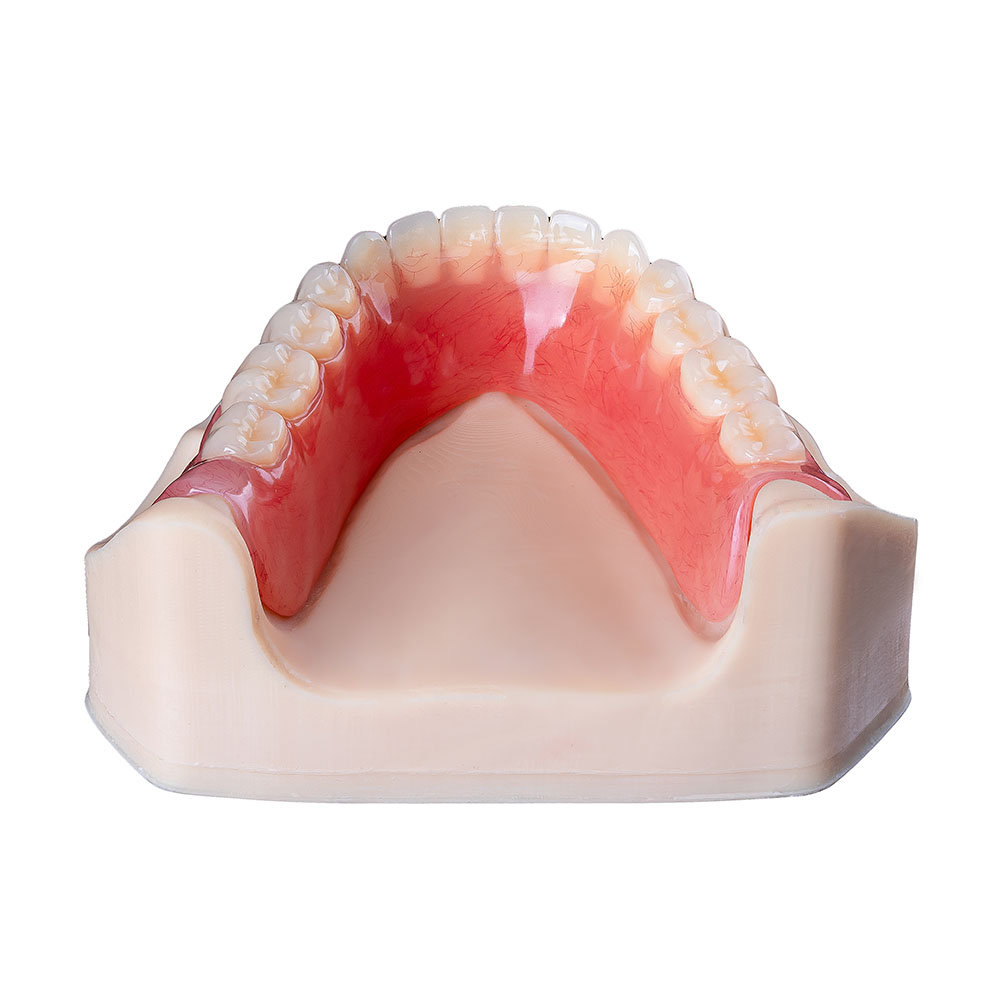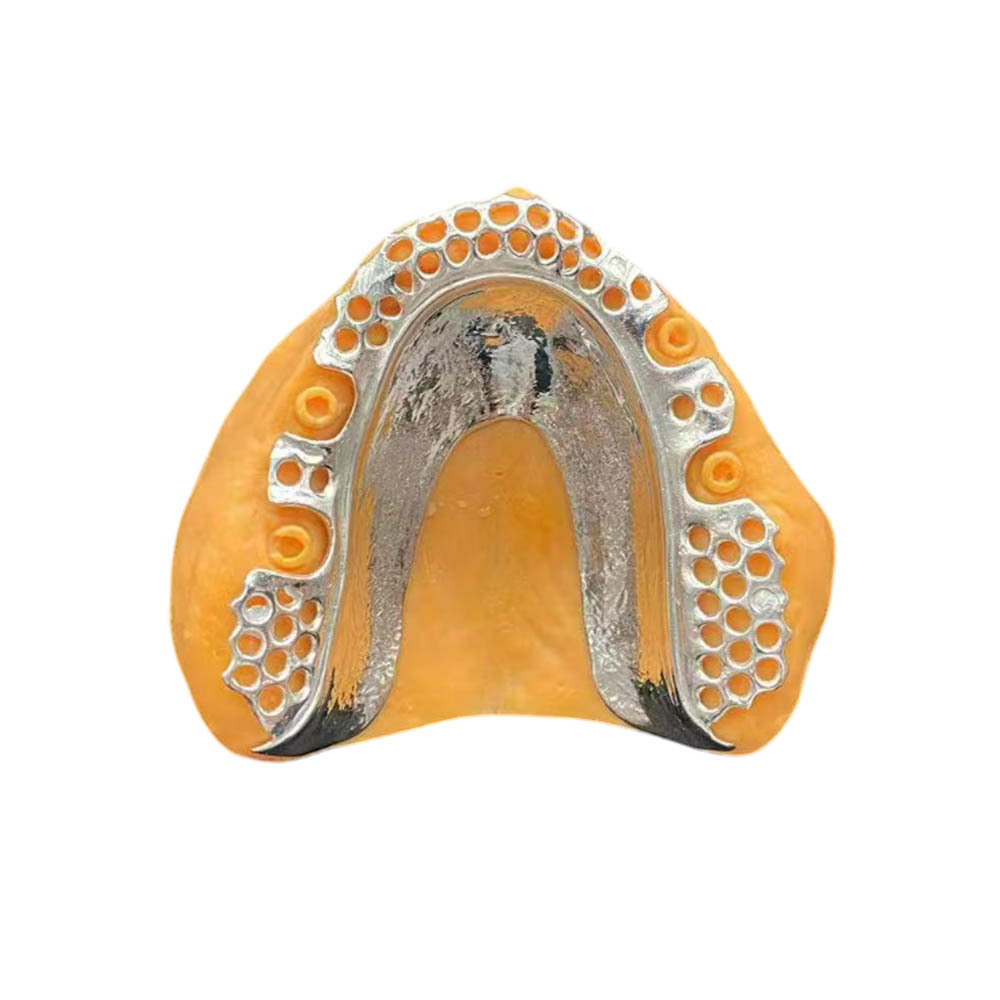Implant Supported Dental Bridge
Grow Your Practice: The Perfect Partner for Your Implant Supported Dental Bridge
At Istar Dental Lab, you no longer have to choose between speed and quality. Why pick just one when you can have both? Our modern digital tools and constant hard work to be the best help your practice with an unmatched benefit. Our goal is to help you give your patients the best results. We make a high-quality implant supported dental bridge for every case.
What We Offer: A Complete Solution for a New Smile
We make every implant supported fixed bridge to the best quality. We know you need different ways to replace multiple teeth. That is why we provide many different options.
Our services include:
- Full arch implant bridge cases, including the All-on-4® treatment concept and All-on-6 dental implants.
- Standard 3-unit implant bridge and 4-unit implant bridge designs.
- Specialized designs like a cantilever implant bridge.
- Both screw-retained implant bridge and cement-retained implant bridge options.
We make each implant retained bridge just how you need it. This lets you work on any type of case, from a single implant bridge for front teeth to a difficult full mouth dental implants procedure. You can trust our work to be both strong and beautiful. Our work is both precise and easy to understand.
Why Partner With Us? The Benefits for Your Clinic
Working with our lab gives you many good things. We help you fix issues and give your patients excellent results. Let’s look at the main benefits.
- Fast 48-72 Hour Service: Greatly lower the time patients spend in the chair and waiting for their appointment. Our smooth and fast making and shipping process means you can manage your schedules with confidence and see more patients.
- Perfect Accuracy Every Time: Speed does not mean lower quality. We deliver dental work with a great fit, a perfect bite, and a natural look on the first try, cutting down on adjustments and avoiding expensive do-overs.
- Skilled Use of Digital Tools: Take advantage of our spending on the latest CAD/CAM and 3D printing technology. Our skill with technology ensures consistent and perfect results every time, which helps patients trust you.
- Fair and Clear Pricing: Get top-quality, high-tech dental work without the high price. Our large and efficient setup leads to better, budget-friendly options for your practice.
- Your Supportive Partner: We are more than just a company that sells you things; we are part of your team. You can rely on our quick communication and helpful technical support to make sure every case has a smooth and successful outcome.
Materials and How We Make Things
The key to a good implant-supported dental bridge is the careful choice of materials and how carefully it is made. At Istar Dental Lab, we are leaders in material science and modern making methods, making sure everything we make has great strength, is safe for the body, and looks good.
Common and New Materials:
- Zirconia: This ceramic material is still a key material for implant-supported bridges because of its great strength, resistance to breaking, and it is safe for the body. Its flexibility means we can make monolithic, layered, or hybrid designs, which look great, especially with multi-layered or clear types. Zirconia’s ability to handle strong biting pressure makes it perfect for back bridges and full-arch dental work.
- Emax (Lithium Disilicate): While mostly known for single crowns and veneers, Emax is also used for front implant-supported bridges where a very clear and natural look is most important. It is quite strong, though usually less than zirconia, making it good for areas with less biting pressure.
- Porcelain-Fused-to-Metal (PFM): Even with more all-ceramic options, PFM bridges are still a dependable option, especially for long restorations or cases that need certain physical strengths. The metal base gives strong support, while the porcelain on top looks good. New improvements in metal types and porcelain layering methods make sure PFM stays a good and long-lasting choice.
- Titanium: As the top standard for dental implants themselves, titanium is also used a lot for implant frameworks and custom abutments because of its amazing safety for the body, great strength for its weight, and ability to join with bone. Milled titanium frameworks provide a great base for ceramic or composite tops, offering a light but very strong option.
- PEEK (Polyether Ether Ketone): This high-quality polymer is becoming more popular for its excellent safety for the body, ability to absorb shock, and it is clear on x-rays. PEEK frameworks can be a lighter option than metal, offering some flexibility that can be helpful in some medical situations, especially for temporary dental work or as a base for hybrid prostheses. Its use in final dental work is still being researched and improved, and it has great potential.
How We Make Them: Our dedication to being accurate and fast is shown in our modern making processes, which combine the best of old-school skills with new digital tools.
- Advanced Milling Techniques (CAD/CAM): The main part of how we make implant-supported bridges is our advanced Computer-Aided Design (CAD) and Computer-Aided Manufacturing (CAM) system.
- CAD Design: Digital scans or scanned models are brought into advanced CAD software. Our talented designers carefully design the bridge base and final piece, making sure the fit, bite, gum line shape, and looks are perfect. This digital setup allows for exact changes and digital try-ins, which reduces mistakes before anything is physically made.
- CAM Milling: After the design is approved, the information is sent to our very accurate CAM milling machines. These multi-axis machines (usually 5-axis) accurately cut the dental piece from pre-sintered zirconia blocks, titanium discs, or other material discs. The accuracy of these machines, along with our strict setup rules, ensures a perfect fit to the implant abutments and the other teeth. For zirconia, heating it in special high-temperature ovens after milling gets it to its final strength and solidness.
- 3D Printing Methodologies: Additive manufacturing, or 3D printing, is changing how dental labs work, offering amazing freedom in design and speed for certain parts.
- Resin Printing: We use advanced resin 3D printers for making very exact models from mouth scans, surgical guides for placing implants, and temporary dental work. This technology greatly cuts down on the need for physical molds and plaster models, making the work process faster and more comfortable for the patient.
- Metal Printing (Selective Laser Melting/Sintering – SLM/SLS): For certain metal bases, especially for difficult or detailed designs, we use metal 3D printing. This technology makes the metal base one layer at a time from powdered metal (like cobalt-chrome or titanium) using a powerful laser. This method allows for very custom, light, and strong bases with very little wasted material, giving a better inside fit and stronger structure than old-fashioned casting methods.
Our Process: Accuracy from Start to Finish
At Istar Dental Lab, our work steps for implant-supported dental bridges are carefully planned to ensure a smooth combination of digital technology, exact making, and strict quality checks. This organized method makes sure that every piece we make is of the best quality, meeting the needs of both the dentist and the patient.
CAD/CAM Workflows: Our digital process starts as soon as we get a case.
- Getting the Digital Scan or Model: We take different digital scan formats (like STL, PLY, OBJ) from mouth scanners, or we can accurately scan old-fashioned molds or stone models using high-quality lab scanners. This first step ensures we have an exact digital picture of the patient’s mouth and implant spots.
- Planning the Case and Checking the Bite Digitally: The digital information is put into our advanced CAD software. Our skilled technicians, often working with the dentist, do a digital bite check to look at the bite, how the teeth meet, and the space between the jaws. This allows for full planning of the bridge design, thinking about things like how it will go in, where the screw holes are, and the shape at the gum line.
- Custom Abutment and Framework Design: For screw-retained or cement-retained bridges, custom abutments are designed digitally to get the best gum shape and make a perfect base for the bridge. The bridge base (substructure) is then designed to make sure it is strong enough, properly supports the top material, and fits perfectly on the abutments or implant connections.
- Aesthetic Design and Virtual Wax-up: The final looking layer of the bridge is designed, thinking about the tooth shape, color, and clearness, and what the patient wants it to look like. This “digital wax model” gives us exact control of the final shape and use before it is made.
- Getting Ready for Milling: Once the design is approved, the digital file is sent to our CAM software. The piece is placed (“nested”) inside the material block (like a zirconia disc or titanium disc) to use the material in the best way. Paths for the milling machines are then created to ensure fast and accurate making.
Our Exact Making Steps: Our workshops have the newest milling machines and 3D printers, run by very skilled workers.
- Automated Milling: Our multi-axis milling machines work with extremely high accuracy, turning the digital design into a physical piece with amazing accuracy. Regular checks and upkeep make sure they always work well.
- Post-Milling Processing: For zirconia, this means careful removal from the holder, followed by heating in special high-temperature ovens to reach its full solidness and strength. For PFM, the metal base is carefully cast or milled, followed by careful porcelain layering and heating.
- Surface Treatment and Finishing: All dental pieces go through careful finishing, polishing, and glazing to get a very smooth surface that resists stains and has a natural shine.
Our Complete Quality Checks: Quality checks are not just a final step; they are a key part of every stage of our work at Istar Dental Lab. Our quality check process with many steps ensures that every implant-supported bridge that we send out is perfect.
- Digital Design Review: Before making, all digital designs are checked by a senior technician or a quality specialist to check the design details, fit, and look against the doctor’s order.
- Checks During the Process: During milling, heating, and layering, technicians do visual checks and measurements to find any problems early on.
- Final Checks After Making:
- Fit Verification: Each bridge is carefully checked on a main model (either a real one or a 3D-printed one) and/or a copy of the implant abutments to make sure it fits perfectly without force.
- Occlusal and Articulation Check: The piece is placed on a machine that copies jaw movements to check the bite contacts and side-to-side movements and ensure a balanced bite.
- Checking the Look: A careful visual check is done under different lights to check the color match, clearness, shape, and surface feel against the patient’s natural teeth or what they want it to look like.
- Checking for Strength and Soundness: While not damaging the piece, we do visual checks, looking for any cracks, chips, or problems with the structure. For some materials, we may do stress tests.
- Final Records: Each case is recorded with photos and detailed notes, making sure we can track everything and followed all the rules.
Working Together to Solve Dental Problems
We know that problems can happen. A loose implant bridge or chipped porcelain on a bridge can be a problem. Our service helps you handle these problems. We can help with a dental bridge repair or implant bridge adjustment. Our designs help lower the chances of problems. We aim to stop problems with implant supported bridges like peri-implantitis. Good design can help with peri-implantitis treatment and stop gum disease around implants. We can also help plan cases for patients with bone loss around implants. Now, let’s talk about how we support you with different patient needs. We can design a strong implant bridge for molars to stand up to chewing pressure. We can also help with an implant supported bridge for smokers or dental implants for diabetics. Our work helps you provide the best care for every patient.
Work With Us on Your Next Implant Bridge
By using these modern materials and making methods, Istar Dental Lab ensures that every implant-supported dental bridge we send out shows our skill in careful making, material quality, and great looks, giving our partners dependable and durable options for their patients. By following these strict work steps, design rules, and complete quality check methods, Istar Dental Lab always delivers implant-supported dental bridges that not only work great and look beautiful but are also made to last a long time, giving our partners full trust in what we make.
Are you ready to provide a better implant supported dental bridge? Let’s work together. We will help your clinic grow and create happy, healthy smiles. We make the work process feel natural and simple.















